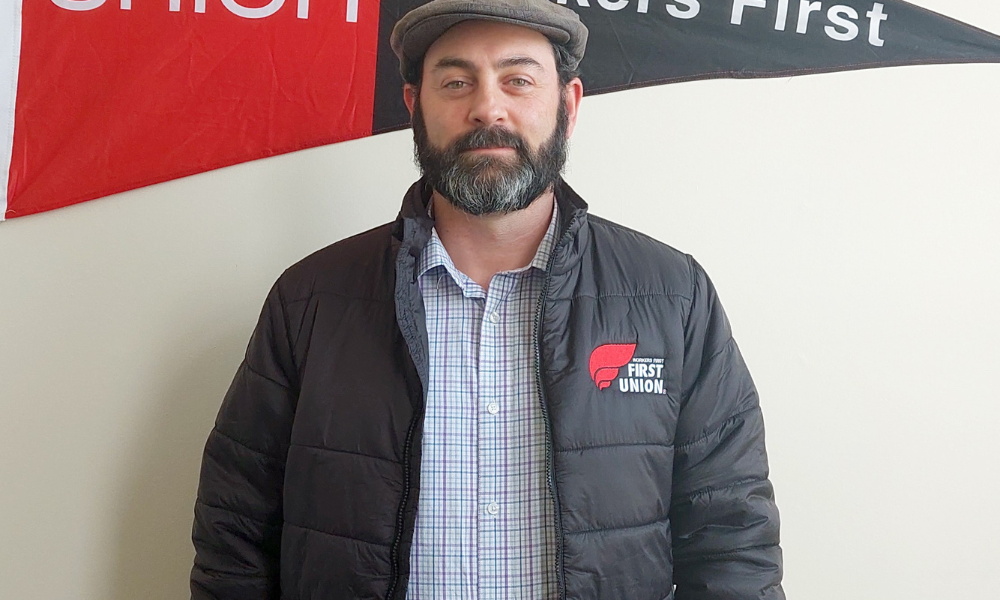
'When you have more people around to respond, it acts as both a deterrent, and helps with the feeling of staff safety'

The costs to organisations of retail crime have reached $2.6 billion annually, including hundreds of millions spent on employees’ wellbeing, according to a recent report by Retail NZ.
Over 90% of retailers say they’ve experienced some form of retail crime over the past 12 months, which as well as theft includes threatening, abusive, or violent customer behaviour.
First Union, which represents over 31,000 workers throughout Aotearoa and deals with a number of major retailers, acknowledges there’s been an uptick in retail crime since Covid, and there’s a rise in violence that accompanies it.
“For us, it’s a matter of worker safety,” says Ross Lampert of First Union. “We deal with a lot of major retailers, including supermarkets, which are often the targets of some of this retail crime that sometimes turns violent.
“Often there’re things like verbal abuse that are lower level, but it all has an impact and an unfortunate psychological effect on the workers.”
The main factor that helps, he says - whether it be shoplifting or more serious activities - is staffing.
“When you have more people around to respond, it acts as both a deterrent, and helps with the feeling of staff safety, because there's safety in numbers,” says Lampert.
“If a store is understaffed, it's detrimental to the organisation’s bottom line, because it tends to increase thieving and also increases staff turnover when people don't feel safe.”
As the union’s national organiser for the food retail sector, Lampert deals on a country-wide level with supermarkets and is engaging with one in particular on a working party around staffing and safety.
“Understaffing is probably the second biggest driver of staff turnover,” he says. “If the wages aren't there, people don't stick around but if the staffing isn't there, people often get fed up and leave because they feel overworked, overstressed and it leads to all kinds of problems - safety, of course, being part of that.”
The biggest advantages are to be gained by having an ongoing conversation with workers, says Lampert.
“Part of the role that we play is to talk to our members and communicate that feedback to the employer.
“Good communication structures with staff includes having a strong health and safety system set up. That includes a democratically elected health and safety person or people that are part of a committee. It’s important too that the committee is actually taking action rather than just meeting to tick a box.”
If the health and safety committee doesn't do anything other than routinely meet and talk about things, he says, “that's not real engagement, that's not actually helpful in lowering crime, and it's not helpful in engaging your workforce or dealing with problems.”
Any measures that serve as a deterrent are good, says Lampert, but what also needs to be addressed are the fundamental issues of retail crime - what’s causing it and how to get it under control - or even get rid of it.
Lampert cites a campaign in Australia called ‘No one deserves a serve’ that he’d like to see running in New Zealand too.
“It’s funded by industry and fronted by the Shop, Distributive and Allied Employees’ Association, which is one of the larger unions that works in retail.
“Big players like Kmart, Bunnings, Woolworths and Coles got behind this and it was a public-facing campaign to really try to address the problem that we see in workplaces around verbal abuse, which happens frequently. Having a public awareness campaign around it will be a good thing so we’re working towards getting this type of a campaign here in Aotearoa.”
Training in how to handle situations that helps staff avoid potentially hazardous encounters is also crucial to progress in this area, he says.
“Having the knowledge of what to do in a given situation, or where to go if something tremendously bad happens, is so important. Knowing what you're supposed to tell the customers, how you're supposed to interact, or whether you get in front of somebody who's an overt shoplifter and try to physically stop them from leaving the store would all be essential elements of training.
“It’s important people understand what the process should be and hopefully stick to that so that it keeps them safe.”
Lampert knows of people who have left because of safety concerns, and it continues to be a problem, he says.
“Employers would be best to keep in mind the safety of their team above the safety of the product. Product can be replaced. Human lives can't.”